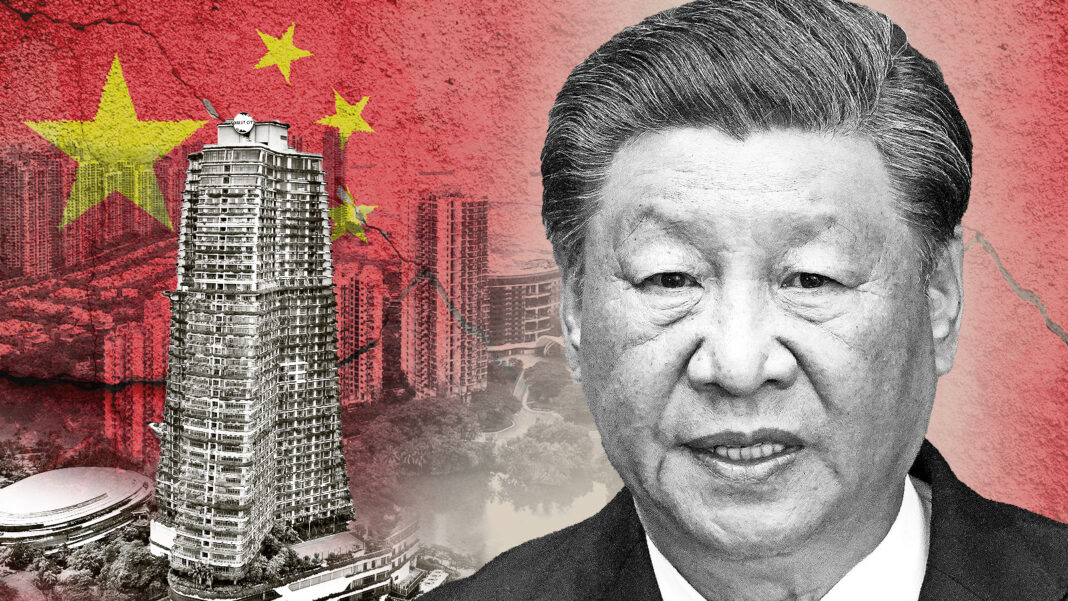The tumultuous journey of China’s Belt Road Initiative (BRI) is set to become tougher in the coming days thanks to the creation of similar global infrastructure schemes in recent times. Europe’s ‘Global Gateway’, G7-led Partnership for Global Infrastructure and Investment (PGII), and now India-Middle East Economic Corridor (IMEC) are set to form a stiff challenge for the BRI.
The combined potential of these schemes to dominate the BRI in terms of financing and geopolitical advantages is going to be problematic for China. European Commission President Ursula von der Leyen said “Global Gateway is about giving countries a choice, and a better choice.”
The Global Gateway event occurred soon after the Beijing government celebrated the tenth anniversary of the BRI, which was marred by to absence of the many heads of the participating countries. While the EU refrained from mentioning the BRI, observers said the objective of the programme is to provide an alternative to it.
The EU chief did mention that the small countries have had to pay a “heavy price” in relation to the environment, workers’ rights, and sovereignty as they opted for other investments –a veiled jibe at BRI as it is criticised for “debt-trap” in the wake of Sri Lanka losing sovereignty to its strategic asset to China over non-payment of loans. “No country should be faced with a situation in which the only option to finance its essential infrastructure is to sell its future,” she said.
On financial grounds, it would be difficult for China to match the amount pledged by the EU, G7 and IMEC member countries under their respective schemes. The total Chinese investment under the BRI is said to be around USD 800 billion. However, the allocation in 2022 saw a slight decline to 67.8 billion, which is about half the investment made in 2015.
On the other hand, the EU pledged USD 339 billion to invest in infrastructure in small countries, especially, in China’s backyard Southeast Asia. Similarly, PGII has started receiving funds. The US has released USD 30 billion as a collaborative effort to mobilise USD 600 billion.67 Choi Shing Kwok, CEO of Singapore-based ISEAS-Yusof Ishak Institute, said “It does promise something the BRI perhaps did not have at the beginning.
It promises hard and soft infrastructure, it promises a more holistic approach.” It has been just a month since its inception, and IMEC is set
to get USD 20 billion. While the scale and scope of the IMEC is small compared to the BRI, however, it is significant from an infrastructure and connectivity perspective as well as from a geopolitical angle. This concerns China which has been trying to establish direct connectivity with the Middle East and Europe. Christian Hanelt, a geopolitical expert at Germany-based Bertelsmann Stiftung, said “IMEC specifically launched to bolster transportation and communication links between Europe and Asia through rail and shipping networks while acting as a counter to China’s BRI.”
The Global Gateway is an alternative to the developing countries that China sees as BRI participants, said Michael Dillon, a professor with the Lao China Center. “It is explicitly and overtly designed to counter the Chinese Belt and Road Initiative,” he said. Italy’s decision to withdraw from the BRI is seen as a major setback for China’s ambition to build connectivity with Europe. Notably, the PGII, Global Gateway and the IMEC host Western allies that share similar values and global outlook.
The BRI has always been controversial due to a lack of transparency and allegations of debt traps. BRI infrastructure projects are not only delayed but around 35 percent of them have encountered major implementation problems, such as corruption scandals, labour violations, environmental hazards, and public protests, as per a study by AidData Lab. “It is increasingly clear that Beijing will need to address the concerns of host countries in order to sustain support for the BRI,” reads the study.
EU is focusing on its commitment to equitable, sustainable and transparent infrastructure alternatives to show the darker side of the BRI. “This is precisely the purpose of the Global Gateway initiative… The EU now needs to practically demonstrate to partner countries that it can make better offers than China — transparently and without debt traps,” said David McAllister, the Chair of the Foreign Affairs Committee in the European Parliament.

